Rock Preparation and Mineral Separation Facilities
The Department of Geology houses all the facilities necessary for cutting, crushing, pulverizing, and powdering rocks and for separating particular minerals from rocks. The products of these processes usually enjoy further analysis in one or more of our other laboratories. For more information about using these facilities please contact Sarah Penniston-Dorland.
Rock Cutting
The department contains two rock saws, a Hillquist saw with a 24-inch diameter blade and an MK tile saw with a 10-inch diameter blade.

Large rock saw

Small rock saw
Rock Crushing
We have two electric jaw crushers, one for cobble-size pieces and the other for small pebble-size pieces. Rocks larger than cobbles must be broken prior to crushing.

Mine and Smelter Corporation large jaw crusher
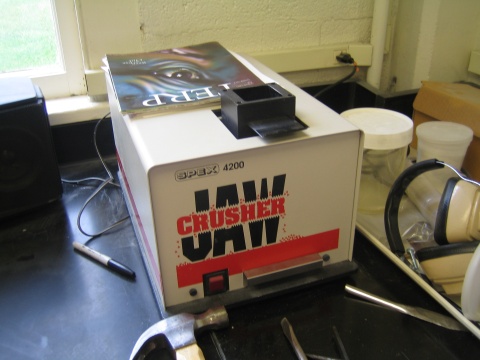
SPEX 4200 small jaw crusher
We also have two stainless steel mortars and pestles for hand-powered crushing and pulverizing.

Large stainless steel mortar and pestle
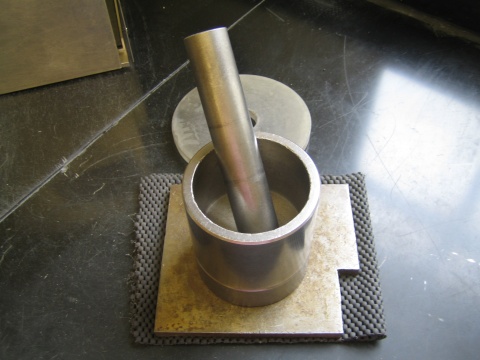
Small stainless steel mortar and pestle
Rock Pulverizing
For samples with too much volume to pulverize by hand using a mortar and pestle we use a Bico/Braun disc grinder, which sits in a dust-evacuating housing.
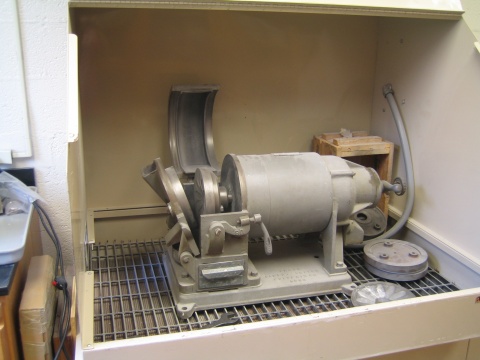
Disc grinder
Rock Powdering
For powdering large samples we use this SPEX 8515 enclosed shatterbox. We have sample containers lined with alumina, tungsten carbide, and agate.
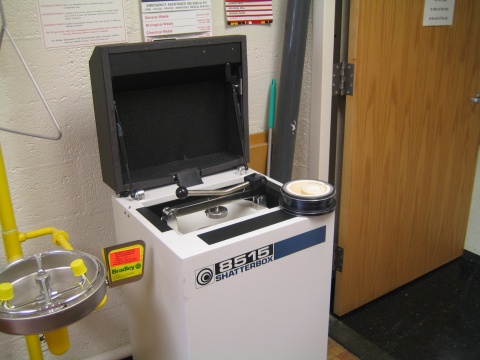
Large shatterbox
We usually powder smaller samples using either this small shatterbox or a mortar and pestle made of alumina or agate.
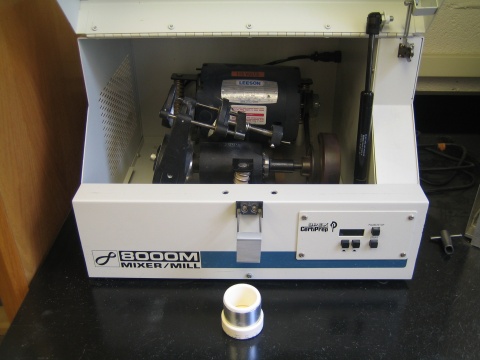
SPEX 8000M small shatterbox
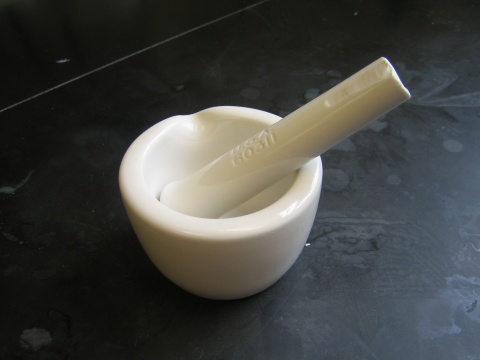
Alumina mortar and pestle
Mineral Separation
The first stage in mineral separation is a density separation using water as a medium. For samples with large volumes we use a Wilfley table, and for samples with small volumes we use a hand pan.
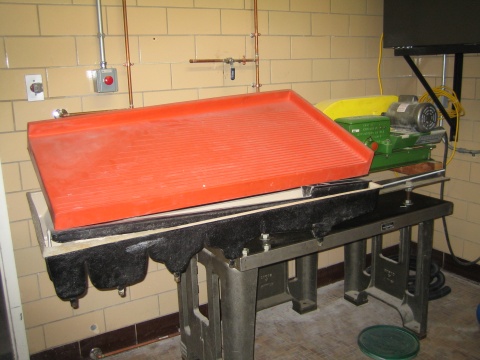
Wilfley table
After the water separation, we remove strongly magnetic particles using a hand magnet. Following this step, we complete another density separation using one or more dense liquids, usually methylene iodide. Methylene iodide has a density of 3.325.
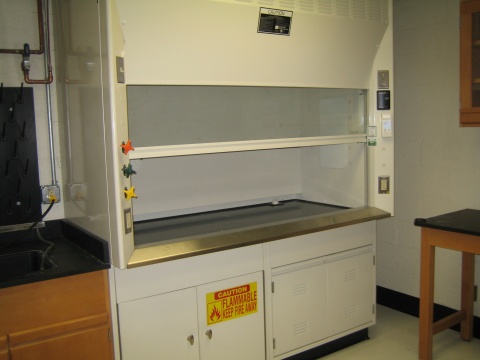
Fume hood for separation using dense liquids
After the separation using dense liquids, the minerals enjoy magnetic separation using this Frantz magnetic barrier separator.
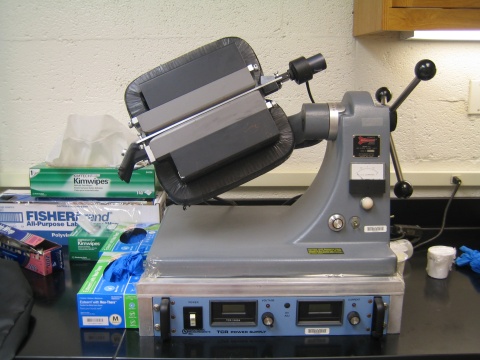
Frantz LB-1 magnetic barrier separator
After these bulk separation techniques, the mineral of interest is ready to be picked by hand under a stereomicroscope.
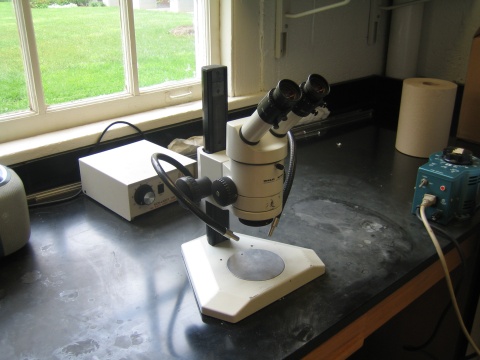
Stereomicroscope for picking minerals by hand
